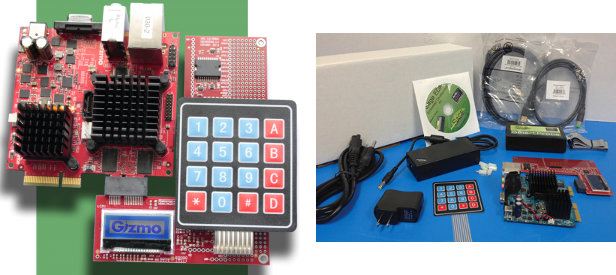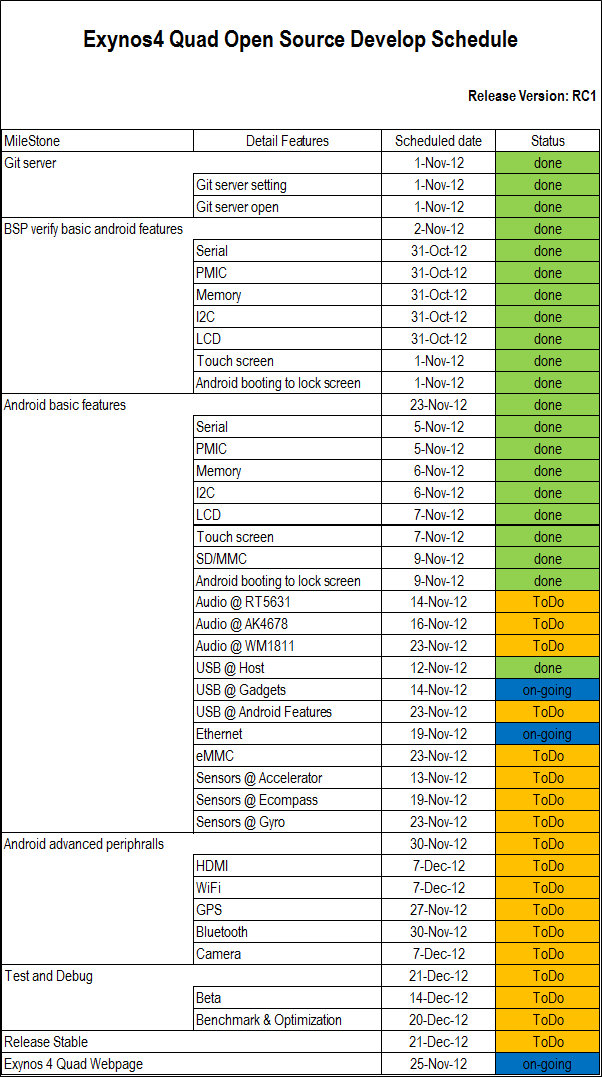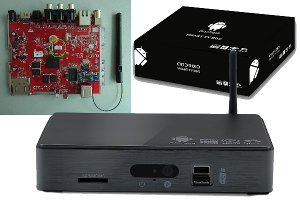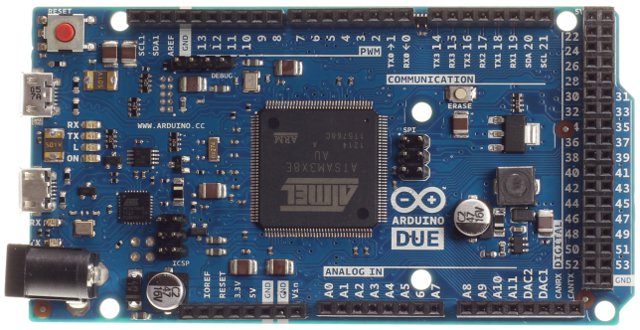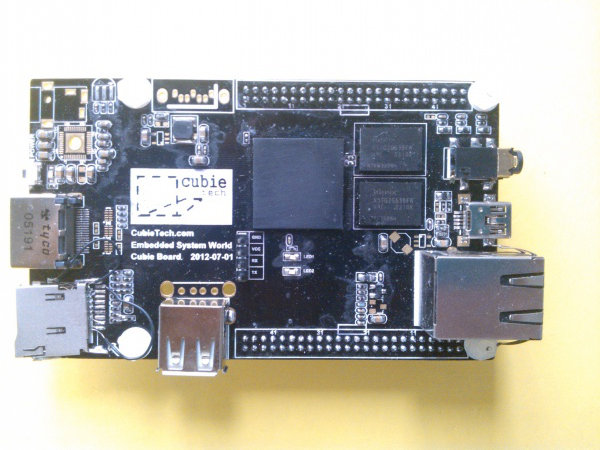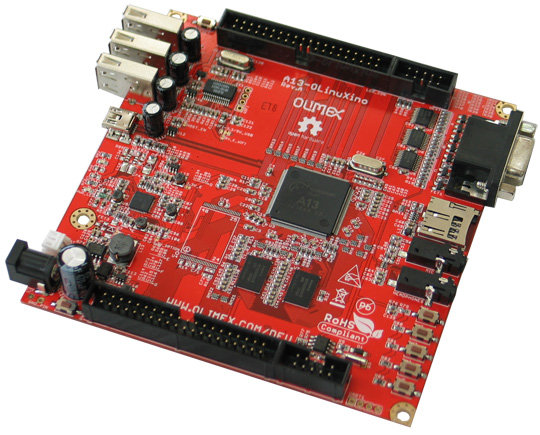I’ve just stumbled upon a low cost and open source embedded development kit featuring AMD G-Series G-T40E dual core APU that comes with the following: The Gizmo Board – A compact (10×10 cm) development board for powered by an AMD G-Series APU. The Explorer Board – An expansion I/O board providing an alpha-numeric keypad, a micro-display, and a breadboard area for prototyping and customization. Sage SmartProbe JTAG Development Tool – The kit includes the SmartProbe hardware and 20 hours of trial time use. Ethernet & USB Cables – The USB cable lets you connect the SmartProbe to your PC. The Ethernet cable is for networking connectivity, which can be used to access the SmartProbe as well. USB wall charger Power Supplyand Cable – A universal power supply for the Gizmo board, with a U.S.-standard cord. 6x standoffs with nuts Alpha-numeric keypad – To connect to the explorer board Installation DVD […]
Samsung Exynos 4412 (Origen 4 Quad Board) Open Source Development Schedule
If you’ve got an Exynos 4412 development board such as Hardkernel ODroid-X or Insignal Origen Quad, or even other devices based on Exynos 4412 such as the Samsung Galaxy S3, you may be interested to know the open source development schedule for the platform as show below (Source: Origenboard.org). Samsung already released the source code for Samsung Galaxy S3 in June, but this should add more recent drivers and support for more peripherals. The stable release should be available on the 21st of December 2012, but in the meantime, you could always pickup features earlier as they are being implemented. The code is available in http://git.insignal.co.kr/ (Git repository) and is maintained by both Insignal and Samsung. Jean-Luc Aufranc (CNXSoft)Jean-Luc started CNX Software in 2010 as a part-time endeavor, before quitting his job as a software engineering manager, and starting to write daily news, and reviews full time later in 2011. […]
Crowdfunding Initiative to Open AMLogic AML8726-M3 STB Source Code
J1nx (Peter Steenbergen) has spend a lot of time together with XBMC developers to try to bring XBMC (Linux) to ARM based set-top boxes, and initially AllWinner A10 processor seemed like a good candidate, unfortunately due to the lack of proper video engine libraries for Linux, progress on this SoC has been extremely slow. Then when Pivos and XBMC announced Pivos Xios DS set-top box based on AMLogic aml8726-M(1) would support XBMC natively, and the kernel and bootlooader (u-boot) source code was made available both on Pivos github account and AMLogic open source website, AML8726 series of processors appeared to be an ideal solution for this purpose. Instead of AML8726-M (aka AML8726-M1) which is limited to 512 MB, it was decided instead to use a faster processor AML8726-M3 that supports 1 GB RAM. The STB of choice is based on “MBX – f16ref” which should be some kind of development […]
The Yocto Project Release 1.3
The Yocto Project Release 1.3 has just been announced. This release codenamed “Danny” and based on Poky 8.0 is the fifth release of the project. The Yocto Project is a framework to assist developers in creating embedded Linux distributions. New features and updates for the Yocto Project 1.3 Improved terminal UI, which makes it easy to see the tasks that are currently executing, and avoids burying any warnings that are printed. Eliminated intermediate step when building cross compiler toolchain Relocatable SDK Large number of usability improvements in the Hob image building UI Upgraded eglibc to version 2.16 Upgraded gcc to version 4.7 Upgraded Linux kernel version to 3.4.11 Added yocto-bsp script for automating the initial parts of creating a new BSP Python functions now consistently use four spaces for indentation – no more having to try to match the mix of tabs and spaces in your recipes Disabled sharing shared […]
Arduino Due Cortex M3 Board is now Available
Announced a little over a year ago, the Arduino (over) Due based on Atmel SAM3U Cortex M3 MCU is finally available for purchase. The specifications of the new boards are as follows: Microcontroller – Atmel AT91SAM3X8E @ 84 Mhz Flash Memory – 512 KB SRAM – 96 KB (64 + 32 KB) Operating Voltage – 3.3V Input Voltage (recommended) – 7-12V Input Voltage (min/max) – 6-20V Digital I/O Pins – 54 including 6 supporting PWM Analog Input Pins – 12 Analog Output Pins – 2 (DAC) Total DC Output Current on all I/O lines – 130 mA DC Current for 3.3V Pin – 800 mA DC Current for 5V Pin – Theoretical 1A, recommended 800 mA Debug ports – JTAG/SWD connector The new board is mostly compatible with the AVR (8-bit) boards, but since the board runs at 3.3V some shields may not be compatible (Arduino Wi-Fi and Ethernet shields do […]
$49 Cubieboard: AllWinner A10 Open Hardware Development Board
The Cubieboard is a development board for the AllWinner A10 Cortex A8 processor. Contrary to some other AllWinner A10 “development board” that are simply based on a tablet or mini PC PCB, the cubieboard has been designed specifically as a development platform and provides access to I/O pins. Here are the specs of this development board: SoC – AllWinner A10 1GHz ARM cortex-A8 processor with Mali400 GPU System RAM – 1GB DDR3 @400MHz Storage – 2 MMC slot Video Output – HDMI 1080p Connectivity – 10/100M Ethernet USB – 2 USB Host, 1 USB OTG 1 IR sensor 96 expansion pins including i2c, spi, lvds, sata… Wi-Fi and Bluetooth can be supported via external USB dongle(s). The prototype above is the first revision of the hardware, and final hardware may look different. Some connectors (e.g. SATA) are not soldered in the picture above. The cubieboard is expected to be an […]
Olimex A13-OLinuXino-WIFI Developer Edition is Now Available
Olimex has announced that they started shipping A13-OLinuXino-WIFI-DEV, an AllWinner A13 development board with 512 MB, 4GB and a Realtek RTL8188CU Wi-Fi module that costs 55.00 Euros with free shipping by courier for a limited time. They announced the start of this project late April, so it took them just 3 months to bring this board to to market. The board has the following specs: SoC – AllWinner A13 Cortex A8 processor at 1GHz, 3D Mali400 GPU Memory – 512 MB RAM Storage – 4GB NAND flash + SD Card slot Power – 6-16VDC input power supply, noise immune design USB – 3 + 1 USB Host, 3 available for users and 1 for Wi-Fi module + 1 USB OTG port Wi-Fi – WIFI RTL8188CU 802.11n 150Mbit module on board Video output – VGA video output + LCD signals available on connector. Audio Output / Input RTC – PCF8536 on […]
More AMLogic AML8726-MX Source Code Released by Ainol
Last week, I found out that AMLogic released the kernel source code for AML8726-MX, its dual core Cortex A9 processor, but this code is only for the “common” platform, and some source code specific to tablets or media players is missing (e.g. some drivers). But today, Ainol released the source code for the Ainol Novo 7 Elf II and Aurora II tablet, both of which are based on on AML8726-M6 dual core processor: Ainol Novo 7 Elf II Source Code (2 GB) – http://dl.vmall.com/c0yqzpadah Ainol Novo 7 Aurora II source code (2 GB) – http://dl.vmall.com/c0imlixp7d The files are pretty big, and the download very slow on my side (“1 day, 16 hours remaining”), so I’ll probably have to give up. I assume “fards” will import the source code into a new repo in his github account. Anyway, this potentially makes AMLogic AML8726-MX a very interesting development platform, although we’ll have to […]


